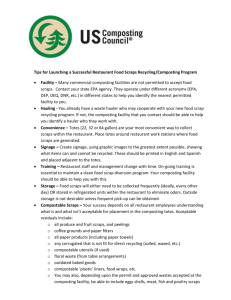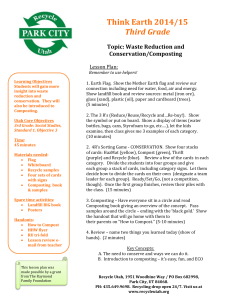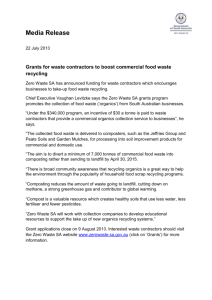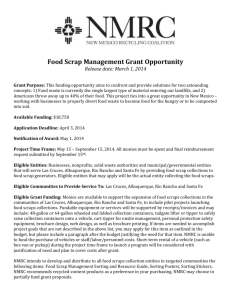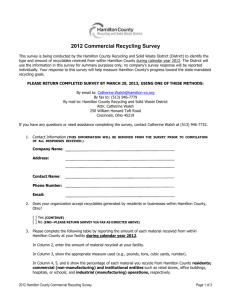clicking here - Utah Recycling Alliance
advertisement
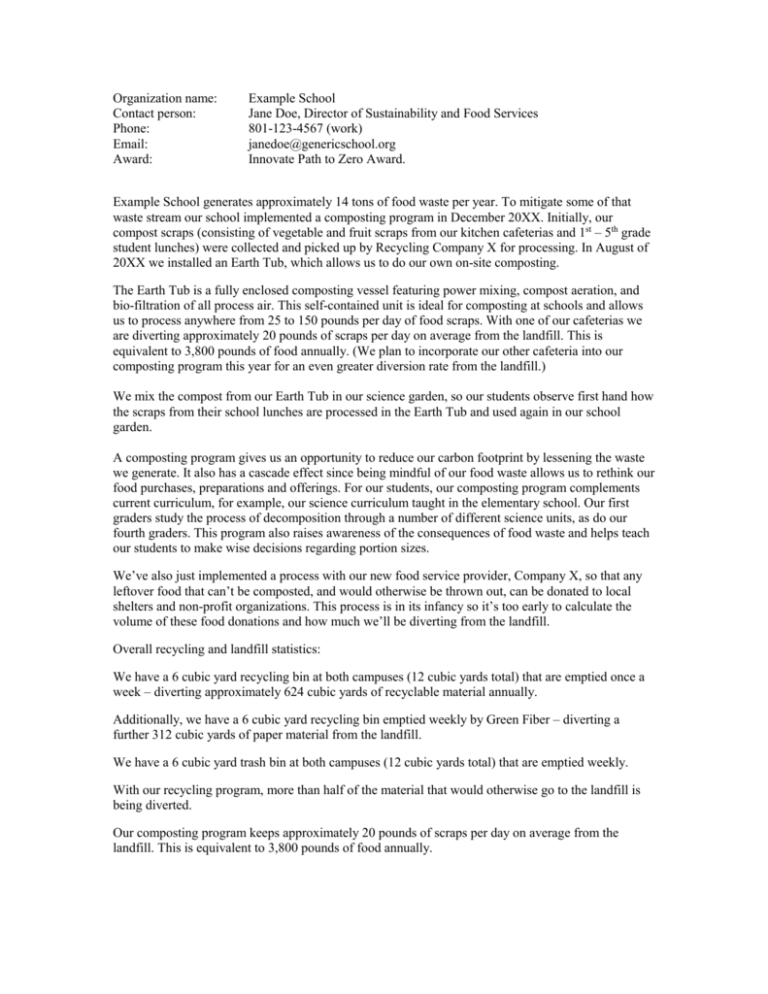
Organization name: Contact person: Phone: Email: Award: Example School Jane Doe, Director of Sustainability and Food Services 801-123-4567 (work) janedoe@genericschool.org Innovate Path to Zero Award. Example School generates approximately 14 tons of food waste per year. To mitigate some of that waste stream our school implemented a composting program in December 20XX. Initially, our compost scraps (consisting of vegetable and fruit scraps from our kitchen cafeterias and 1st – 5th grade student lunches) were collected and picked up by Recycling Company X for processing. In August of 20XX we installed an Earth Tub, which allows us to do our own on-site composting. The Earth Tub is a fully enclosed composting vessel featuring power mixing, compost aeration, and bio-filtration of all process air. This self-contained unit is ideal for composting at schools and allows us to process anywhere from 25 to 150 pounds per day of food scraps. With one of our cafeterias we are diverting approximately 20 pounds of scraps per day on average from the landfill. This is equivalent to 3,800 pounds of food annually. (We plan to incorporate our other cafeteria into our composting program this year for an even greater diversion rate from the landfill.) We mix the compost from our Earth Tub in our science garden, so our students observe first hand how the scraps from their school lunches are processed in the Earth Tub and used again in our school garden. A composting program gives us an opportunity to reduce our carbon footprint by lessening the waste we generate. It also has a cascade effect since being mindful of our food waste allows us to rethink our food purchases, preparations and offerings. For our students, our composting program complements current curriculum, for example, our science curriculum taught in the elementary school. Our first graders study the process of decomposition through a number of different science units, as do our fourth graders. This program also raises awareness of the consequences of food waste and helps teach our students to make wise decisions regarding portion sizes. We’ve also just implemented a process with our new food service provider, Company X, so that any leftover food that can’t be composted, and would otherwise be thrown out, can be donated to local shelters and non-profit organizations. This process is in its infancy so it’s too early to calculate the volume of these food donations and how much we’ll be diverting from the landfill. Overall recycling and landfill statistics: We have a 6 cubic yard recycling bin at both campuses (12 cubic yards total) that are emptied once a week – diverting approximately 624 cubic yards of recyclable material annually. Additionally, we have a 6 cubic yard recycling bin emptied weekly by Green Fiber – diverting a further 312 cubic yards of paper material from the landfill. We have a 6 cubic yard trash bin at both campuses (12 cubic yards total) that are emptied weekly. With our recycling program, more than half of the material that would otherwise go to the landfill is being diverted. Our composting program keeps approximately 20 pounds of scraps per day on average from the landfill. This is equivalent to 3,800 pounds of food annually.


